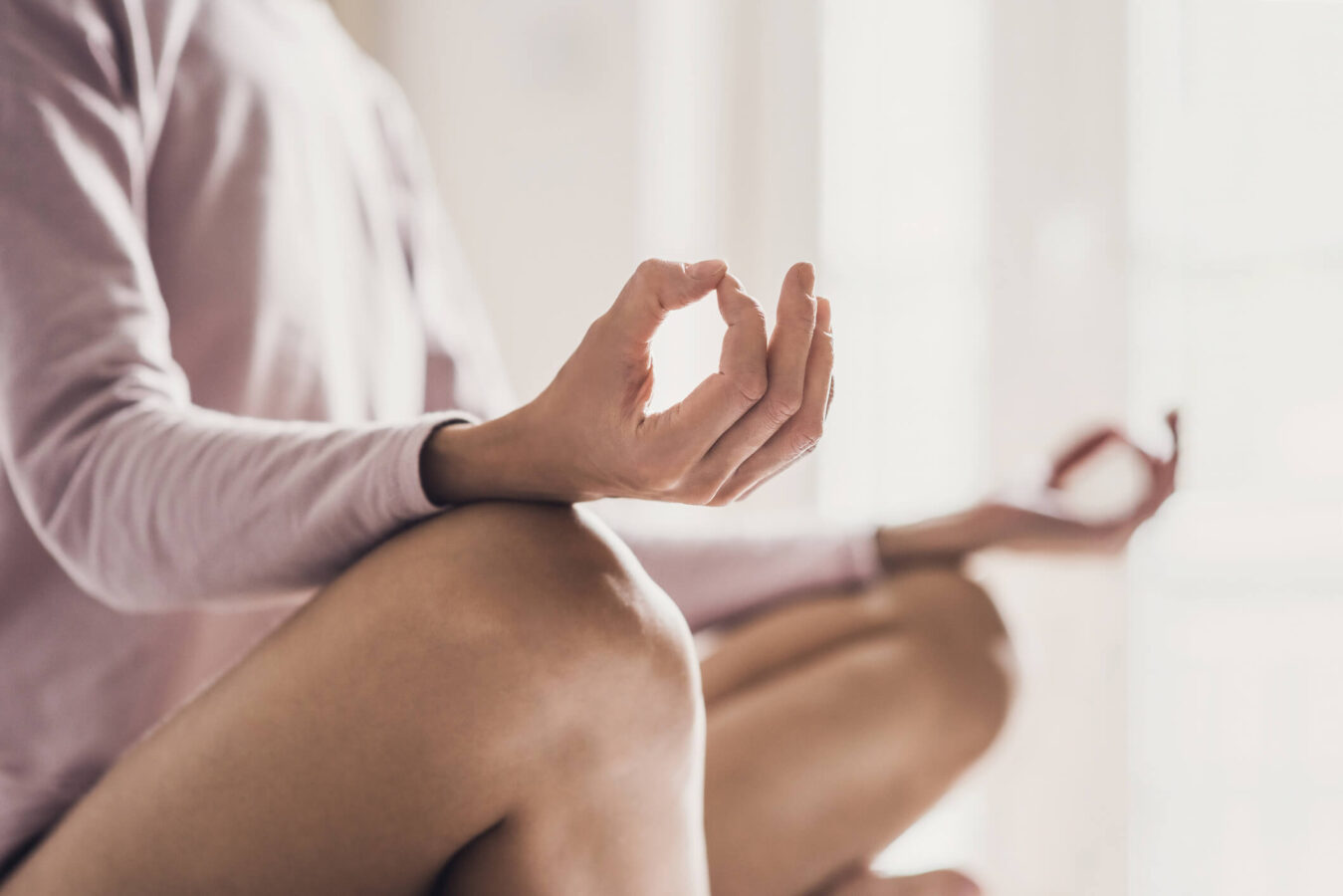
Medically reviewed by Misty Seidenburg
According to the Centers for Disease Control and Prevention (CDC) approximately 50 million adults in the U.S. are living with chronic pain. Pain that lasts months or years can impact how you see and approach the world, and rob you of a good quality of life. If you cannot treat the underlying cause of chronic pain, healthy lifestyle strategies can help you manage it.
By definition, chronic pain is pain that lasts at least six months or more. It’s different than acute pain which occurs when you get hurt, and goes away once your injury has healed. This term is now more often referred to as persistent pain, as it persists past the natural course of healing.
There are many causes and types of chronic pain. Long-term pain can be related to an isolated injury. It can be a side effect of a systemic condition like arthritis or a lingering symptom of disc problems, nerve damage, and even headaches and migraines.
However, pain does not always mean damage has occurred in the body.
Think of the human nervous system as being like the complex computer motherboard in your car. Now, imagine a glitch where the sensors misfire, like when the “check engine” light goes on when nothing is wrong. The nervous system can send faulty messages to the brain triggering pain sensations—even though the body has healed and no injury exists.
Chronic pain manifests differently from person to person. Someone may have constant pain, while for others, pain comes and goes. Pain can occur anywhere in the body, and it can feel like shooting, aching, stinging, burning, or throbbing or even sensations like running water or ants crawling It can manifest differently for each individual.
When chronic pain goes unmanaged, it can have far-reaching effects on all aspects of your life: relationships, work, hobbies, sleep, and mental health.
People with chronic pain often feel anger, sadness, frustration, anxiety, and depression. Pain and emotions are interconnected, and if you are feeling down, you’re less likely to make positive choices that impact your health and wellness. That creates a cycle of pain and mood disorders that is often difficult to break.
The choices you make every day can impact your experience of chronic pain. While it may not be possible to cure or eliminate the underlying cause of pain entirely, there are many things you can do to reduce it to a manageable level.
It may seem counterintuitive to move when you’re in pain, but gentle, low-intensity exercise is incredibly beneficial for individuals with chronic pain. Walking, the step machine or elliptical trainer, and aquatic therapy are all good ways to stay active and fit.
Low-intensity exercise keeps the body flexible and mobile. Exercise releases endorphins which are the “feel good” hormones that act as natural painkillers and mood lifters. Regular exercise also burns calories to help maintain a healthy weight and lessen the stress on painful joints and muscles.
If you are hesitant to work out because you don’t want to aggravate your pain, you might be a good candidate for physical therapy. Licensed physical therapists know exactly how to increase strength, endurance, and mobility gradually and safely based on your symptoms and abilities.
Physical therapy also offers a wide range of modalities to relieve pain and improve function and range-of-motion in stiff and inflamed tissues.
What you eat (and drink) also impact your experience of chronic pain. Inflammation is a common trait of many chronic diseases, including chronic pain. Conscious dietary changes can reduce inflammation and pain.
The Mediterranean diet which is high in olive oil, nuts, fish, and unrefined carbohydrates is shown to lower inflammatory markers. (This is in contrast to the Western diet which is high in red meat, saturated fats, refined sugars, and processed foods.)
Proper hydration is also beneficial for those living with chronic pain (and everyone else of course.) Water helps to lubricate the joints, which is good for patients with arthritis and other painful joint conditions.
Staying hydrated can help to lower the frequency and intensity of headaches and migraines, a common source of chronic pain. It also speeds up the recovery process after an injury, by moving oxygen and nutrients throughout the body.
The way you see the world can change the way you feel about your health condition. A systematic review of research on the link between a positive attitude and chronic non-cancer pain, determined that positivity is associated with a reduction in the severity of pain.
So you might be wondering how to “think positive” when you’re feeling awful? You can start by focusing on the improvements you’re making with some of the healthy lifestyle habits we’ve already mentioned. Also, choose a healthcare provider and/or physical therapist who supports and encourages you, and is committed to continually exploring new ways to manage your pain.
Remember that as someone living with chronic pain, you are never powerless. By taking proactive steps to maintain a healthy lifestyle, you can improve how you move and feel.
The American Psychological Association calls sleep the “critical third pillar of a healthy lifestyle” (after diet and exercise.) The benefits of getting enough deep, high-quality restorative sleep are almost too many to mention here.
When it comes to chronic pain specifically, a lack of good, uninterrupted sleep limits the time your body has to repair its tissues and recharge the immune system. That increases the risk of pain flare-ups.
Adults who get less than six hours of sleep per night have more inflammatory markers in their blood which can increase pain. Poor sleep habits also increase the risk of obesity, and excess weight can exacerbate chronic pain.
To improve your sleep, try to turn in around the same time every night. Avoid caffeine, alcohol, and screen time at least a few hours before bedtime. If you suspect a sleep disorder like insomnia or sleep apnea, talk to your healthcare provider about scheduling a sleep study.
The stress-pain connection is real, and it is powerful. Pain causes stress because it makes our daily tasks, activities, and hobbies more challenging and less enjoyable. Stress causes muscles to tense up or spasm, which contributes to chronic pain.
Stress management is an essential component of a healthy lifestyle for everyone—including those with conditions causing chronic pain. Exercise, diet, and good sleep hygiene all help with stress management.
Other natural methods for relieving stress include meditation, yoga, reading, taking a bath, getting a massage, or just connecting with friends and loved ones. Be mindful when you start to feel anxious and find safe and healthy outlets to relieve your stress.
We can ease the burden of physical challenges by leaning on others. Whether that is a support group for individuals with chronic illness, or conversations over coffee with your partner or best friend, health challenges do not have to be isolating. Sometimes just being heard and seen is enough to remind you that you are not going it alone, and others understand.
If you have persistent feelings of being overwhelmed, frightened, or depressed, consider speaking with a mental health professional to help you navigate the psychological ramifications of your physical condition.
Are you tired of putting life on hold because of chronic pain? Find a physical therapy clinic near you to learn more about pain management without surgery.
